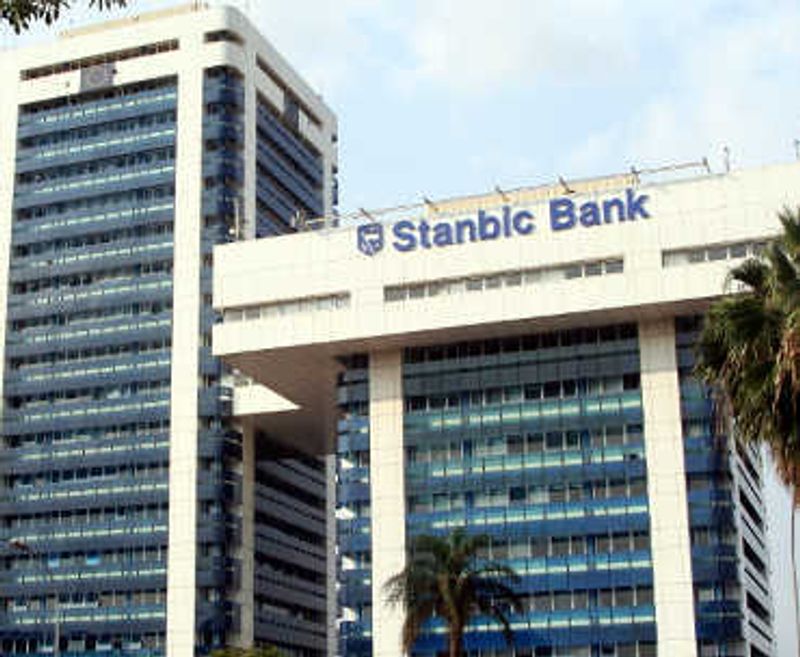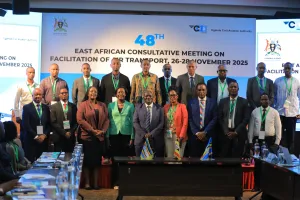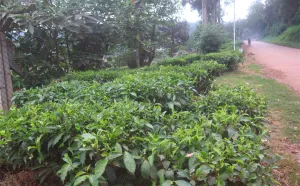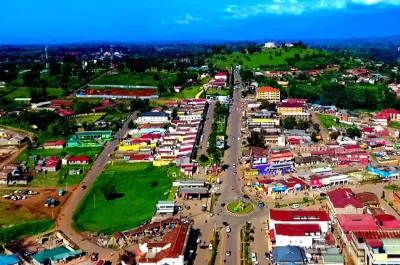
The main limitation to the success of the planned cooperative bank could be the absence of cooperative unions
Lack of access to funds for investment in Agriculture is one of the major stumbling blocks that prevent millions of Ugandan farmers from turning the country’s huge agricultural potential into a means to escape poverty.
This has also prevented Uganda from using agriculture as an engine for social economic transformation compared to other developing and developed countries with much less natural resource endowment.
Despite its importance as a source of livelihood for millions of Ugandans through food production, employment, source of exports as well as source of inputs for agro-processing industries, most small scale farmers remain less attractive to lenders, a scenario that keeps productivity of millions of people very low, hence perpetuating the vicious cycle of poverty.
Most farmers depend on their meagre savings for investment in the sector. But quite often, the savings are insufficient to meet the high and rising cost of inputs like fertilizers, chemicals, seeds, land for expansion, as well as the rising cost of living especially the cost of education which erodes the much needed capital for re-investment into farms.
Compared to other sectors such as manufacturing and trade, lending to farmers by commercial banks is still considered a more risky venture and therefore attracts very high interest rates.
For example, the 2013 Bank of Uganda (BoU) report on credit extension by commercial banks shows that the agricultural sector received just 8 percent of total bank lending. Lending rates to the agricultural sector averaged 27 percent.
A 2010 study by the African Development Bank (ADB) on agriculture in East Africa concluded that high interest rates are a major obstacle for accessing agricultural credit in Uganda.
In addition, most commercial banks prefer to lend short term and design monthly repayments schedules both of which do not suit the medium to long-term and the seasonal nature of agricultural projects.
In an effort to counter the obstacles faced by farmers in accessing credit from banks, politicians are now calling for the re-establishment of the farmers’ cooperative bank to provide cheaper and financially appropriate products to farmers than those currently available on the market.
The argument for the revival of the co-operative bank received a major boost during the recent NRM caucus meeting in Kyankwanzi where the Minister for Trade and Cooperatives Amelia Kyambadde put in a spirited argument for its re-establishment as an engine for commercialization of agriculture and agro-processing.
However, the idea has been met with mixed views from some sections of the public with some arguing that the cooperative bank collapsed in the very hands of the people who are now rooting for its revival.
BoU Governor Tumusiime Mutebile, during the release of the Central Bank’s monthly monetary policy statement this week, expressed as much doubt in the success of the proposed cooperative bank considering that it was there before but collapsed.
If the drought of capital to agriculture is a reality in Uganda but the captains of the financial industry continue to remain skeptical about the potential for success of a cooperative bank in easing access to affordable credit, one wonders where the problem lies and how it could be overcome?
The Ghost of Cooperatives
The Cooperative bank of Uganda, whose main objective was to finance farmers’ cooperatives, collapsed in 1999 following a pile-up of huge bad debts mostly to cooperative organisations that had failed.
Political interference
Nathan Nandala Mafabi, the MP for Budadiri West county and former Leader of the Opposition in Parliament, argues that the government had an active hand in causing the death of the cooperative unions and hence the cooperative bank which had lent out money to them.
“In 1998, the cooperative bank was seized by the government because it had failed to collect money it had lent to cooperative unions. But the same people in government had grabbed assets of the cooperatives such as lorries. How could they pay back loans when the government was not willing to pay its debts?” asked Mafabi.
Recently, perhaps in admission of government’s role in the death of hitherto promising farmers’ groups, President Museveni directed the Ministry of Finance to pay an estimated Ushs 13bn owed to over ten cooperative unions that are now in limbo. The possibility of that presidential directive materialising is, however, doubtable as records pertaining to the membership is likely to be contested owing to the collapse of leadership structures in most of the unions as well as other institutions that would verify the actual beneficiaries and the amount owed.
Those who knew the defunct Wamala Coffee Growers Union very well recollect painful memories of how the then National Resistance Army (NRA) rebels led by Yoweri Museveni took their lorries to the bush war but did not return them after the war, and neither did the government compensate the cooperative. Many of the former members of Wamala union are now deceased.
Many people in Bugisu know the effect of political interference in the success and operations of any cooperative. Four years ago, the government instituted a probe into the operations of Bugisu Cooperative Union following complaints by some of the members that leaders – who included outspoken Forum for Democratic Change (FDC) stalwart Mafabi, had allegedly mismanaged the finances of the cooperative. The government took over the operations of the union including collecting rent and managing the day-to-day running of the union.
Four years down the road, no report has been released to streamline the operations of the cooperative. This has raised suspicion among many Bagisu coffee farmers that there was a political or economic motive for the intervention other than streamlining the operations of Uganda’s only surviving cooperative union. Many attribute the recent collapse of the price of Arabica coffee, their major cash crop, to the ‘death’ of their cooperative.
According to Mafabi, the union has now lost an estimated Ushs 10 billion which is collected in form of rent and other incomes by government officials.
Dead co-operativesThe main limitation to the success of the planned cooperative bank could be the absence of cooperative unions in the country. In its hay days, the cooperative bank served vibrant organizations that had solid leadership and substantial volumes of produce against which it would lend the farmers money.
Today, while the government has supported the creation Savings and Credit Cooperative Organizations (SACCOs), experts argue that these will not adequately promote agriculture and therefore do not need a specialised bank. A Ministry of Finance official who preferred anonymity said SACCOs’ main objective is to mobilise money for investment into diverse fields.
Indeed, the membership of most SACCOs is hardly homogeneous as the case was in the 1980s. Rather, they bring together people from diverse backgrounds with varied objectives such as boda boda riders, brick makers, shop keepers and students for the sole purpose of pooling funds for borrowing by the members who then invest in diverse areas including weddings. On the other hand, Cooperatives are groups of people who usually deal in similar products or pursue the same goal, usually revolving around the need to boost output or to bargain for better pay and services.
Creating a cooperative bank to finance SACCOs instead of financing real cooperatives would therefore not achieve the objective of transforming the agricultural sector, according to Mafabi, who is also the chairman of Bugisu Cooperative Union.
“The best thing the government can do is to go down to the bases of the original cooperative and mobilize the members in those areas to cooperate again as they did. Teso region had a cotton farmers’ cooperative, Buganda had East and West Mengo, Wamala and Masaka unions. Bugisu had Bugisu cooperative union, Bunyoro had its own and Acholi too had its union.
“The people are the owners of the cooperatives and they must agree to work together but not confuse people with SACCOs,” said Mafabi.
It goes without saying therefore that the continued absence of cooperatives in Uganda constitutes a fundamental gap in accessing funds from financial institutions.
As Jimmy Kiberu, the Head of Corporate Affairs at Uganda Development Bank Limited (UDBL) noted: “It is easier to deal with a group than with hundreds or thousands of individuals.”
Under cooperative groups, farmers would be able to bargain for better prices, access cheaper inputs, and be able to secure guarantees from buyers for credit as well as other providers of goods and services like education.
For example, Mafabi says, currently coffee farmers get about Ushs 2500 per kilo of processed coffee, which he says is a quarter of the global market price of coffee. The rest of the proceeds, he notes, are enjoyed by middlemen.
“If cooperatives were active, they would fill the role now played by middlemen and would be able to get better prices for their members,” he says.
Most other sources of alternative funding for farmers such as concessional loans from development banks as well as foreign banks with special interest in agriculture have requirements that better suit cooperatives. For example, UDBL, under its Small Farmer Groups or Cooperatives initiative, lends money to farmers’ groups to support medium to long term projects in agriculture.
“The model here is that you need to have a tripartite arrangement where you have a farmers’ group, the off-taker – or the buyer and the bank comes in as a third party. Here we secure the market and also produce in wholesale, ” says Johnson Pande, UDBL’s manager for Business Development.
According to Pande, instead of asking for collateral, the bank requires the borrowing cooperative to have in place a well structured leadership structure as well as a guaranteed market for their produce. This is usually done by striking an agreement of purchase by an established buyer such as Mukwano for cotton and sunflower or Uganda Breweries for Epuripuri sorghum.
Whereas UDBL offers relatively lower interest rates for farmers at 10% per annum, Pande says the minimum amount a farmers’ group can get is Ushs100m.
The high minimum threshold is just but one of the apparently more stringent requirements set by UDBL to farmers. As noted by Pande, a group must be guaranteed a market, which may not be feasible with many other crops but also exposes farmers to exploitation by the buyer. The group must also guarantee the price as well as output from its members, as if it were an industrial exercise where one is able to determine input and output.
Lack of insurance
A more realistic solution, according to Mafabi, would be the involvement of the government to insure farmers, up to a certain level, against losses arising from bad weather that tends to be the biggest factor that affects output.
Indeed, as this reporter found out during a tour of farmers in the great farming state of Iowa in the United States, the American government is replacing direct subsidies to farmers with partial insurance cover to guard against losses arising from bad weather and excess production. Still, the insurance programmes would work better under cooperative organisations than through individual small-scale farmers.
Absence of farmer sensitization
There are a few sources of cheaper credit whose beneficiaries remain the few elite who are connected to funding agencies and government officials with information on how to access them.
For example, in 2009, the Ugandan government introduced the Agricultural Credit Facility (ACF) to: “Facilitate the provision of medium and long term loans to projects engaged in agricultural and agro-processing on more favourable terms that are usually available from private financial institutions.”
But as noted by Stanbic Bank’s Managing Director Philip Odera recently, poor sensitization of farmers about the availability of low-interest funds under the ACF has contributed to the low uptake of the funds.
Recent media reports suggest that only about 280 applications have been successful since the government introduced the ACF four years ago, despite its remarkably low interest rates of 10-12% per annum. Other loan facilities over the past year have hovered above 25% per annum.
Managed by the BoU, the scheme started with Ushs 30bn from the government for on-lending to farmers and agribusiness enterprises through commercial banks. Rather than take their applications to the Central Bank, interested borrowers go through any of the 29 accredited Participating Financial Institutions (PFIs) which evaluate the application and if successful, the Commercial Bank disburses the full loan amount to the farmer applicant, after which it seeks a 50% reimbursement from the BoU.
Repeated requests by The Sunrise to the BoU for details on the fund have yielded no responses so far. The problem is made worse by the evident lack of literature or promotional materials in banking halls or in the mass media and bill boards to bring the opportunities to the attention of intended beneficiaries.
Other organisations like aBi-Trust, which is supported by foreigners like the Dutch, have funds which can be accessed by agribusinesses involved in the value chain system.
According to Josephine Mukumbya of aBi-Trust, between 2010 and 2013, aBi-Trust managed to facilitate access such financing to over 90,000 agribusiness value chain actors through Lines of Credit and Guarantees.
“We work with financial institutions across all tiers, to address constraints limiting supply of financial services for farmers and other value chain actors. aBi-Trust also supports banks to identify and train the existing and potential client in financial literacy and make them more attractive and bankable hence increasing the demand for financial services,” said Mukumbya.
Subsistence production
The sheer low level of output by majority of farmers in Uganda, often caused by poor inputs and declining soil fertility, means that many farmers can hardly get excess output to take to the market.
As noted by Mukumbya, improving access to credit for farmers in Uganda needs to be complemented by other binding constraints such as addressing the extension system, better inputs and better agronomics practices.
Mukumbya said: “Access to financial services is not the only key ingredient to increasing productivity, but it needs to be coupled with extension systems that enable small holders to improve agricultural practices to generate surpluses that enable them repay the loans.”
She added that increased access to affordable insurance products, as well as increased technical assistance to agribusiness actors, especially at production level, would go a long way in improving productivity, quality and value addition for the benefit of agribusiness actors.














Sunrise Admin
Leave a Comment
Your email address will not be published.